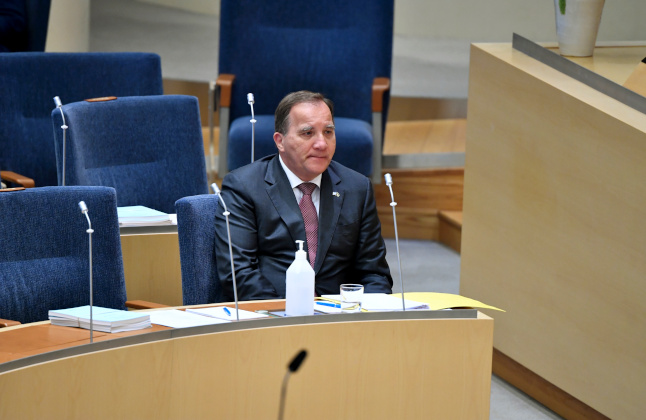The 63-year-old Löfven, a former welder and union leader with the square build and nose of a boxer, guided the Swedish left back to power in 2014, and then hung on by moving his party closer to the centre-right after the 2018 elections.
A master of consensus for some, a dull and visionless party man for others, he finally fell out with the Left Party propping up his government, becoming the first Swedish government leader to be defeated by a no confidence vote.
“Sweden is in a difficult political situation, a very difficult one,” Löfven told a press conference following his defeat.
He has a week to choose between elections or resignation. It may however be too early to count out the man who emerged victorious from elections deemed lost in 2018, and it’s possible his negotiating skills could forge a new majority.
Born in Stockholm in 1957, poverty forced his single mother to give him up when he was 10 months old to a foster family in Sollefteå, 500 kilometres (310 miles) north of the capital, where his foster father was a factory worker.
He became a welder and spent 15 years in a defence factory, and head of the metal workers’ union from 2006 to 2012.
‘Houdini’
While the traditional left struggled in Europe — only six social democratic or socialist heads of government remain in the 27-member EU — Löfven managed to stay on top, even though he confused supporters by moving to the right, earning a reputation as a “right-wing socialist”.
“Stefan Löfven could go down in history for his inventiveness and willingness for sacrifices to keep the Social Democrats in power,” political commentator Ewa Stenberg wrote in Dagens Nyheter newspaper at the weekend.
“The Prime Minister has survived many crises,” Stenberg said, adding that he now faces his greatest test so far.
“He now needs to do the political equivalent of what escape artist Harry Houdini did over a hundred years ago,” she said, stressing several seemingly impossible political knots had to be untied.
While controversial, the decision to mitigate the Covid-19 pandemic with mainly non-coercive measures was not what weakened him.
In fact, the Swedish strategy, promoted by state epidemiologist Anders Tegnell, boosted his ratings in opinion polls, even as the death toll rose to over 14,000 in the country of 10.3 million people, a far worse toll than in Nordic neighbours.
Challenging the Swedish model
The political crisis erupted on Thursday when the Left Party, which has propped up the government in parliament, said it was ready to support a motion of no confidence against the prime minister, even if it meant mixing votes with those of the right-wing parties and the far-right Sweden Democrats.
The reason was a preliminary plan to reform rent controls, potentially freeing landlords to set rents for new apartments.
On the left, the proposal is considered at odds with the Swedish social model and a threat to tenants’ rights.
While having become accustomed to threats from the Left Party, which until now have never materialised, Löfven was trapped as he also felt bound by a deal signed with two centre-left parties, the Centre Party and the Liberals.
The deal included proposals for liberal market reforms which irked the Left Party, and secured power for the Social Democrats but it was also seen as a move to the right.
And it reminded people of another perceived lurch to the right in November 2015, when the government abruptly closed the doors to most immigrants after Sweden had already taken in hundreds of thousands of refugees, notably from Syria.
By Marc Preel/AFP



 Please whitelist us to continue reading.
Please whitelist us to continue reading.
Member comments